Nishi-Azai: Maruko-bune Museum, Sugaura, Oku Biwako Parkway 丸子船・菅浦・奥琵琶湖パークウェイ・西浅井町
|
Title   • File Name • File Name   • Date • Date   • Position • Position   |
|

Maruko-bune Museum (Maruko-bune no Yakata). The maruko-bune was commonly used to transport cargo over the lake from the Hokuriku region to the Kyoto-Osaka region during the 17th and 18th c. MAPThe museum is a short bicycle ride from Nagahara Station (JR Kosei Line). 滋賀県西浅井町大浦582 丸子船の館
|
|

Maruko-bune wooden boat which was a common sight on Lake Biwa in the old days before trains came to fore. Near this area was a major maruko-bune port called Oura.
|
|

Maruko-bune, a traditional wooden boat mainly for shipping cargo across Lake Biwa in the old days. This used maruko-bune was donated by a local resident. 丸子船
|
|

Black copper plates decorate the bow (ダテカスガイ). This checkered pattern was unique to Lake Biwa boats. The wood seams are stuffed with conifer fiber (槙縄) to repel water.
|
|

Maruko-bune's trademark is this half-round cedar or cypress log on both sides. おも木
|
|

The bow's tip is studded.
|
|

Maruko-bune were a vital transportation link between northern Japan and Kyoto/Osaka. Goods coming and going via the Sea of Japan also went over the lake.
|
|

Rudder hangs down from a torii-like brace (かさ木), also used as a mast rest when the mast is laid down. Most of the wood is Japanese conifer (槇の木).
|
|
|
|

The sail is made of thick cotton material, replacing the old straw mat that didn't last long.
|
|
|

This maruko-bune is 17.2 meters long.
|
|

Top view of maruko-bune.
|
|

During the 17th and 18th-centuries, over 1,000 maruko-bune sailed on the lake. The busiest ports were Shiotsu in the north and Otsu. After railroads were built, maruko-bune dwindled. Today, there are no maruko-bune on Lake Biwa.
|
|

Maruko-bune transported rice, fish, kelp, and many other northern Japan goods bound for Kyoto/Osaka. From Kyoto, came cotton, confections, soy sauce, sake, kimono, textiles, tobacco, and more.
|
|

Maruko-bune exhibits.
|
|

Diorama of Oura Port. MAP
|
|
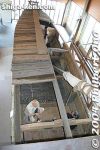
Top view with roof partially removed for viewing.
|
|

Maruko-bune crew.
|
|

Maruko-bune boat hands.
|
|
|
|
|

Adjacent museum called Oura Furusato Shiryokan. A museum of local artifacts and knicknacks.
|
|

Adjacent museum showing things from Oura.
|
|

Bicycling to Sugaura.
|
|

Sugaura is a small settlement in Nishi-Azai along the northern shore of Lake Biwa. It is a quiet and scenic area with a nice lakeshore road and trail almost to the tip of the peninsula. Akasaki Maruko-bune park赤崎丸子船
|
|
|

Some scenery from the road between Nagahara and Sugaura.
|
|

Sugaura is one of the best areas of northern Shiga and northern Lake Biwa. Quiet, clean, and scenic.
|
|
|
|
|
|
|

Large maruko-bune displayed outdoors, without a mast.
|
|

The wooden maruko-bune boat was a common sight on Lake Biwa before railroads were built. They were mainly used for shipping cargo between Kyoto and the northern region of Fukui, Kanazawa, etc.
|
|

Large wooden paddle of a maruko-bune boat. The boat also had a sail. The boat had a round log on both sides.
|
|
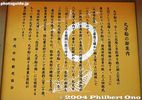
The big maruko-bune boat (17 meters long) was donated by a native of Nishi-Azai. It could hold 13 tons of cargo.
|
|

Lookout point, Chikubushima island in the distance
|
|
|
|
|
|

Chikubushima island in the distance
|
|
|
|
|
|

Sugaura as seen from Lake Biwa.
|
|

Sugaura as seen from Lake Biwa. The Oku Biwako Parkway Road can be seen going up the mountain.
|
|

The maruko-bune boat is a symbol of Nishi-Azai town which is now part of the city of Nagahama.
|
|

Going down to the lake shore of Sugaura.
|
|

Sugaura is a length-wise town hugging the shore of the lake.
|
|
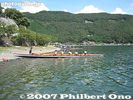
Imazu Junior High School rowers on the shore of Sugaura. They row across the lake between Imazu and Nagahama every summer.
|
|
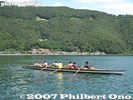
They row in a fixed-seat, wooden boat based on a traditional design circa 1917. Off Sugaura. Oku Biwako Parkway Road going up the mountain.
|
|

Entrance to Sugaura, a quaint lakeshore village on a peninsula. It is will be designated as an Important Cultural Landscape. A pleasant trail goes along the lakeshore trail.
|
|

Thatched-roof gate, called Shisokumon 四足門, on the west end used to monitor outsiders entering the village. Another one is at the east end. MAP
|
|

Suga Shrine, dedicated to Sugaura's patron god. The shrine also has a connection with Emperor Junnin (733-765). 淳仁天皇. 須賀神社須賀神社
|
|

Way to Suga Shrine. Emperor Junnin supposedly once lived in this area in secret.
|
|

Suga Shrine
|
|
|

Sugaura Local History Museum 菅浦郷土史料館. Contains historical documents related to the town. But it was closed when I went.
|
|
|

Thatched-roof gate, called Shisokumon 四足門, on the east end used to monitor outsiders entering the village.
|
|

Beyond the east end of Sugaura (beyond the east thatched-roof gate) is a scenic walking trail along the peninsula's shore.After you pass through the town, there is a hiking/bicycle trail along the peninsula.
|
|

Swimming area
|
|

Trail goes further.
|
|

Trail going up the mountain.
|
|

Scenic point at end of trail
|
|
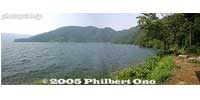
Panorama at end of trail
|
|

Scenic point at end of trail. Notice the hut.
|
|

One entrance to Oku Biwako Parkway is at Sugaura. It's not a toll road. The most trying part of bicycling around Lake Biwa. MAP
|
|

But the views can be marvelous. There is an alternate and less strenuous bicycling route behind the mountains, but there's no scenery like this.
|
|

Looking at Sugaura in Nishi-Azai.
|
|
|

View from Oku Biwako Parkway
|
|
|

At the top of the Oku Biwako Parkway road is a lookout point.
|
|

There's a large parking lot at the top.
|
|

A few pretty good views from the top.
|
|
|
|

View from Oku Biwako Parkway
|
|
|
|

Hydrangeas
|
|
|
|
|
|
|
|

Omi-Shiotsu Station platform JR近江塩津駅
|
|

Omi-Shiotsu Station and old trains
|
|
|

Nishi Azai-cho Town Hall
|
|

Nishi Azai-cho Town Hall in winter
|
|
|
|
|

Nagahara Station
|
|

Nagahara Station in winter
|
|

Tunnels
|
|
|
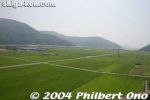
Nishi-Azai scenery from the train toward Nagahara Station.
|
|
|
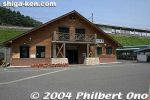
Nagahara Station on the JR Kosei Line.
|
|

Nagahara Station on the JR Kosei Line. A nice, loghouse station building. JR湖西線、永原駅
|
|

Nagahara Station in the distance.
|
|
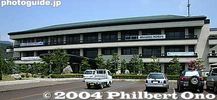
Nagahama City Hall, Nishi-Azai Branch. An incredibly large and beautiful town hall for a small town (Later merged with Nagahama.)
|
|
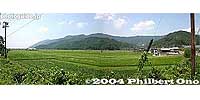
Near Nagahara Station
|
|
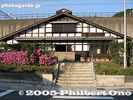
Omi-Shiotsu Station JR近江塩津駅
|
|
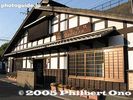
Omi-Shiotsu Station
|
|

Bicycle rental sign. Most stations along Lake Biwa offer bicycles for rental.
|
|

Tickets please
|
|
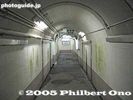
Omi-Shiotsu Station corridor to the tracks upstairs.
|
|
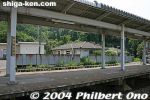
Omi-Shiotsu Station platform.
|
|
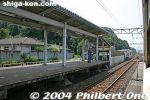
Omi-Shiotsu Station platform.
|
|

Omi-Shiotsu Station with an old 111-series JR train.
|
|

Old Hokuriku Line train
|
|
|
|
|
|